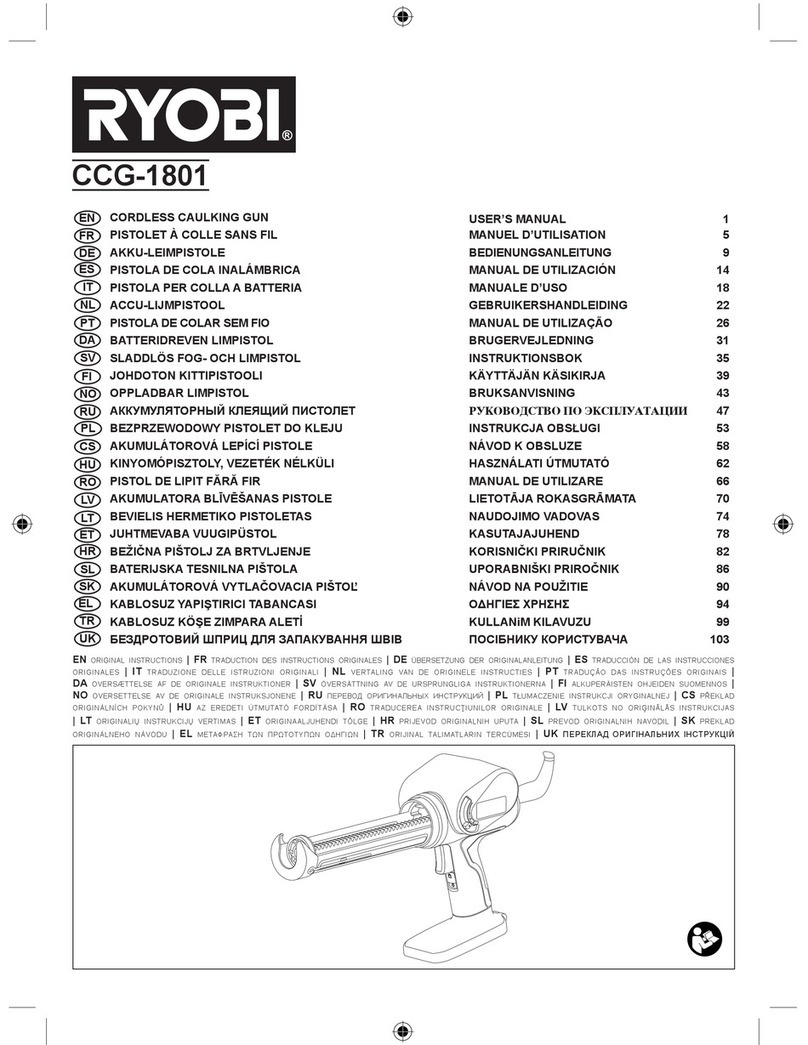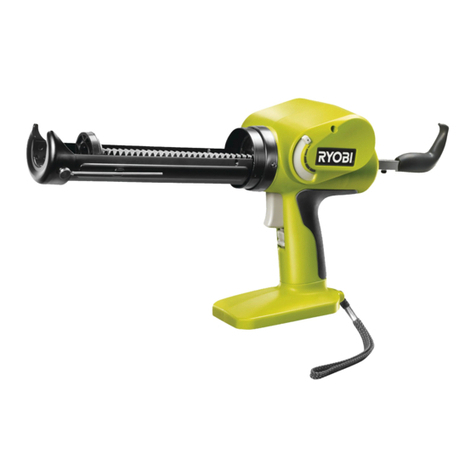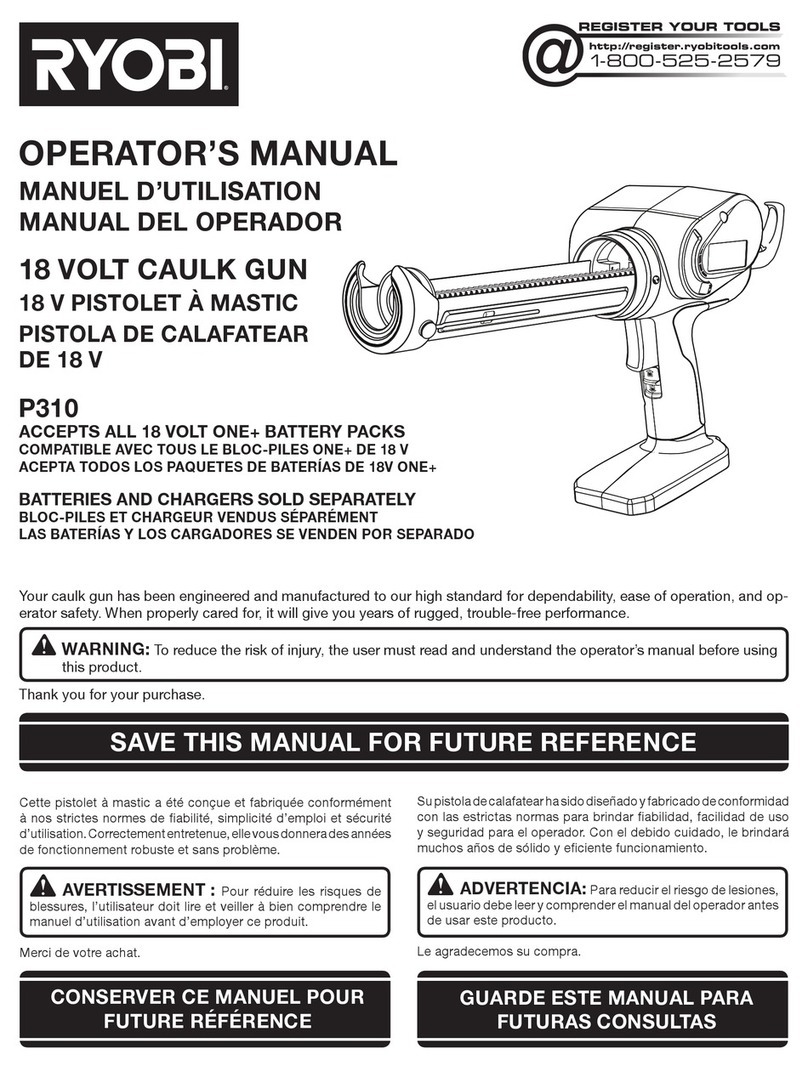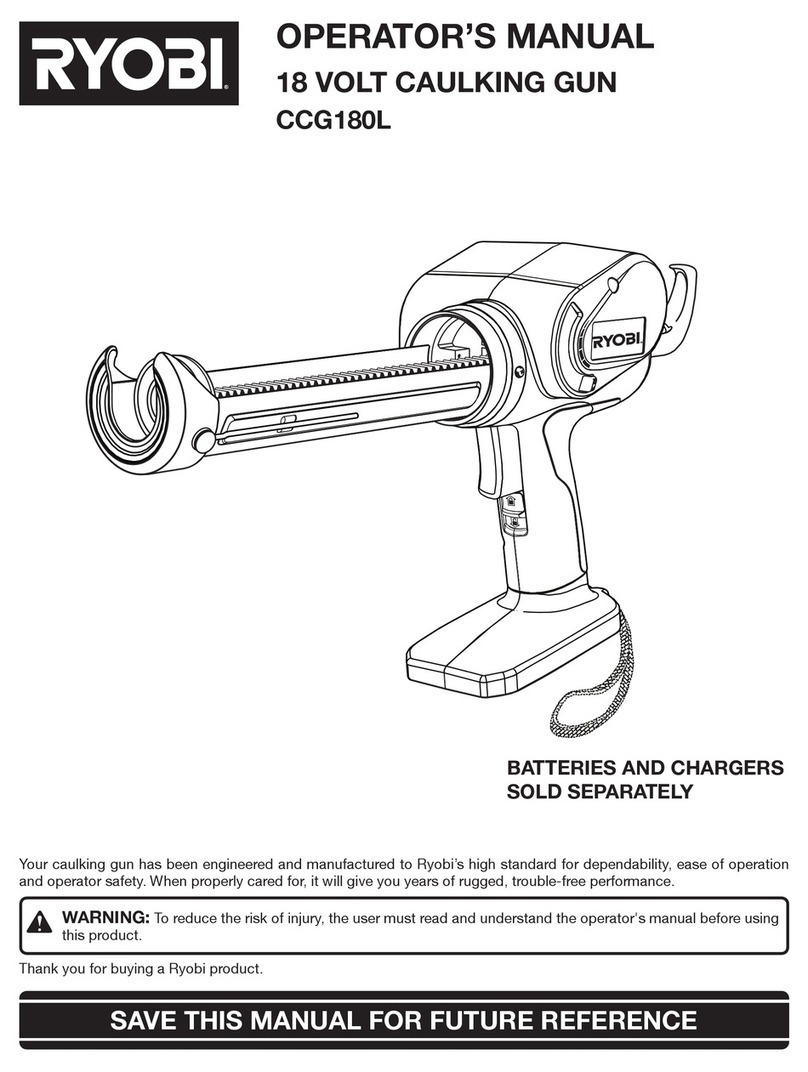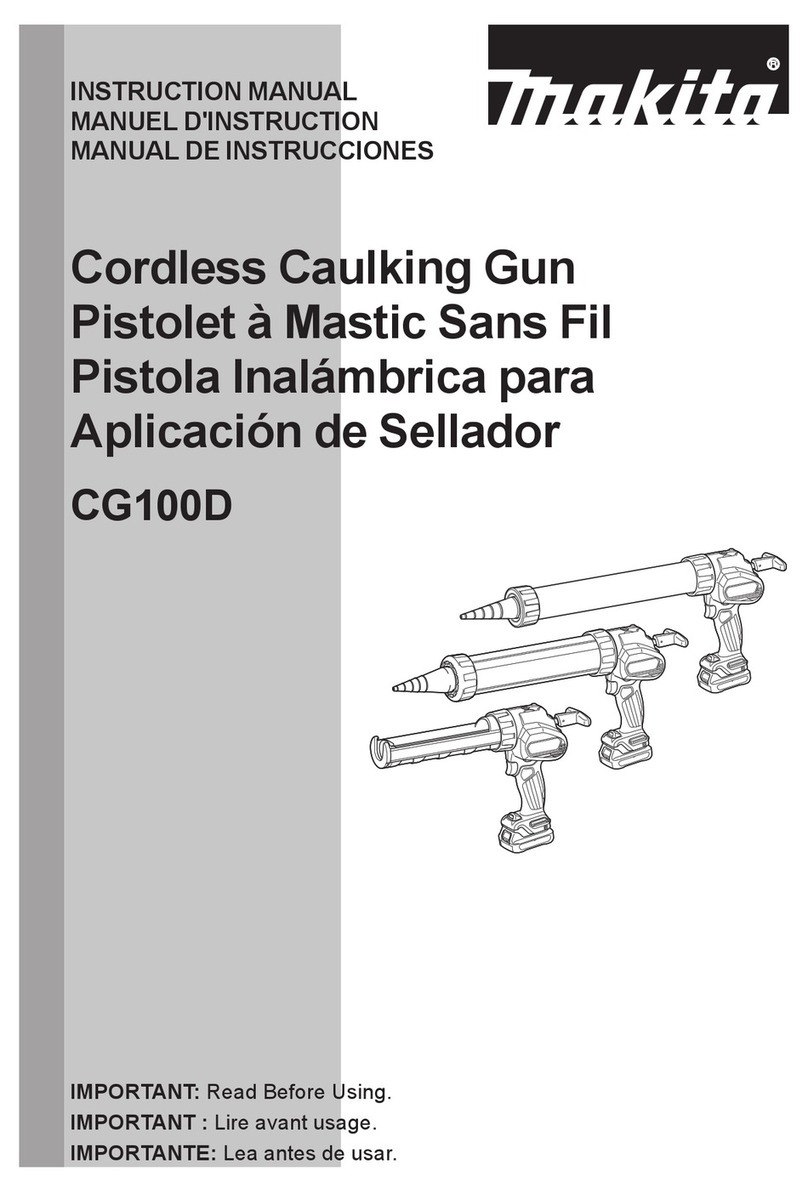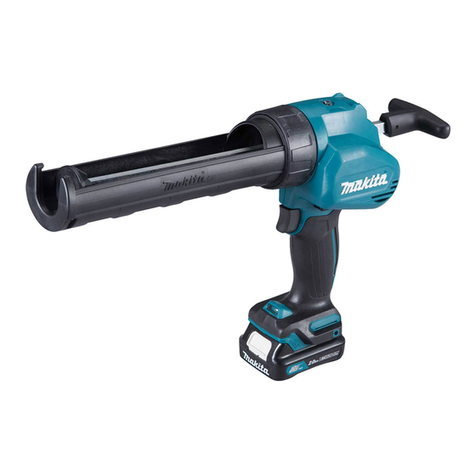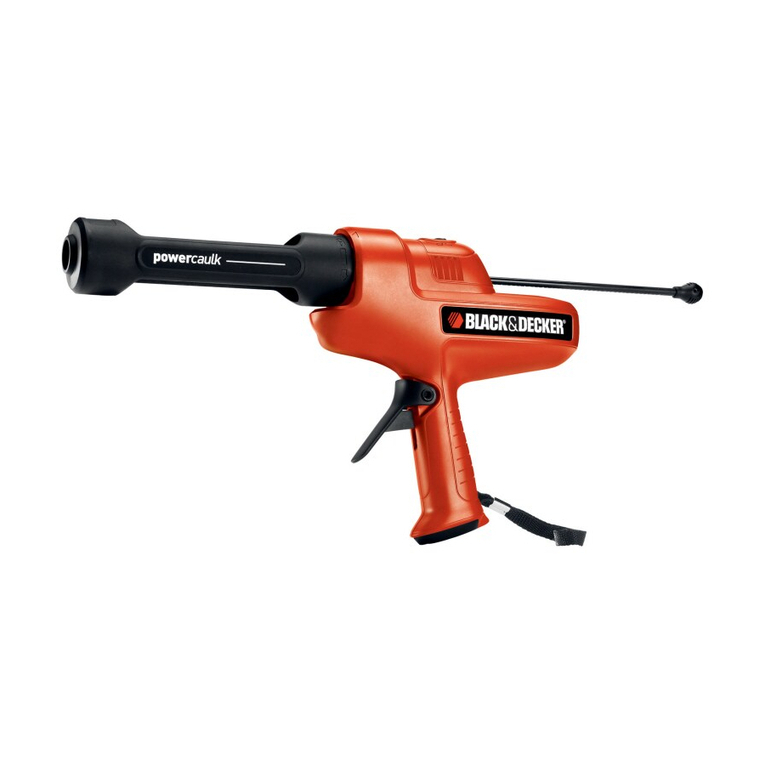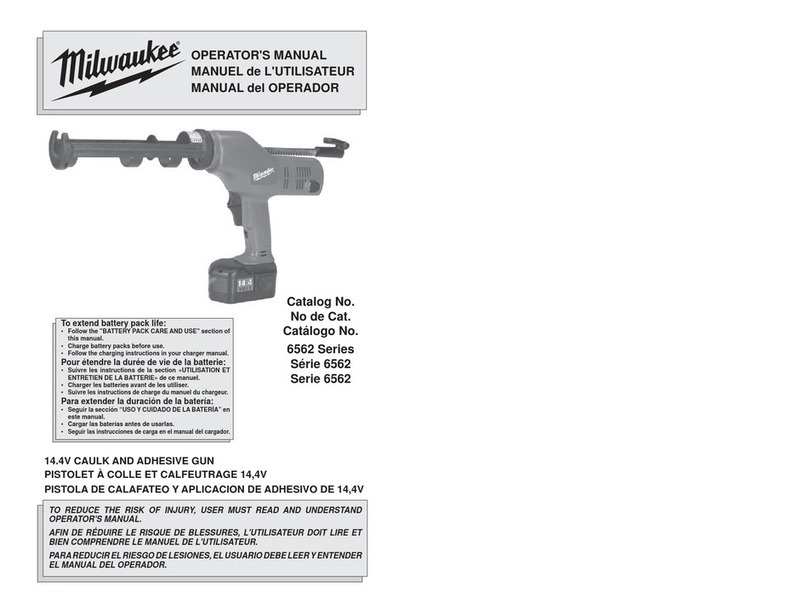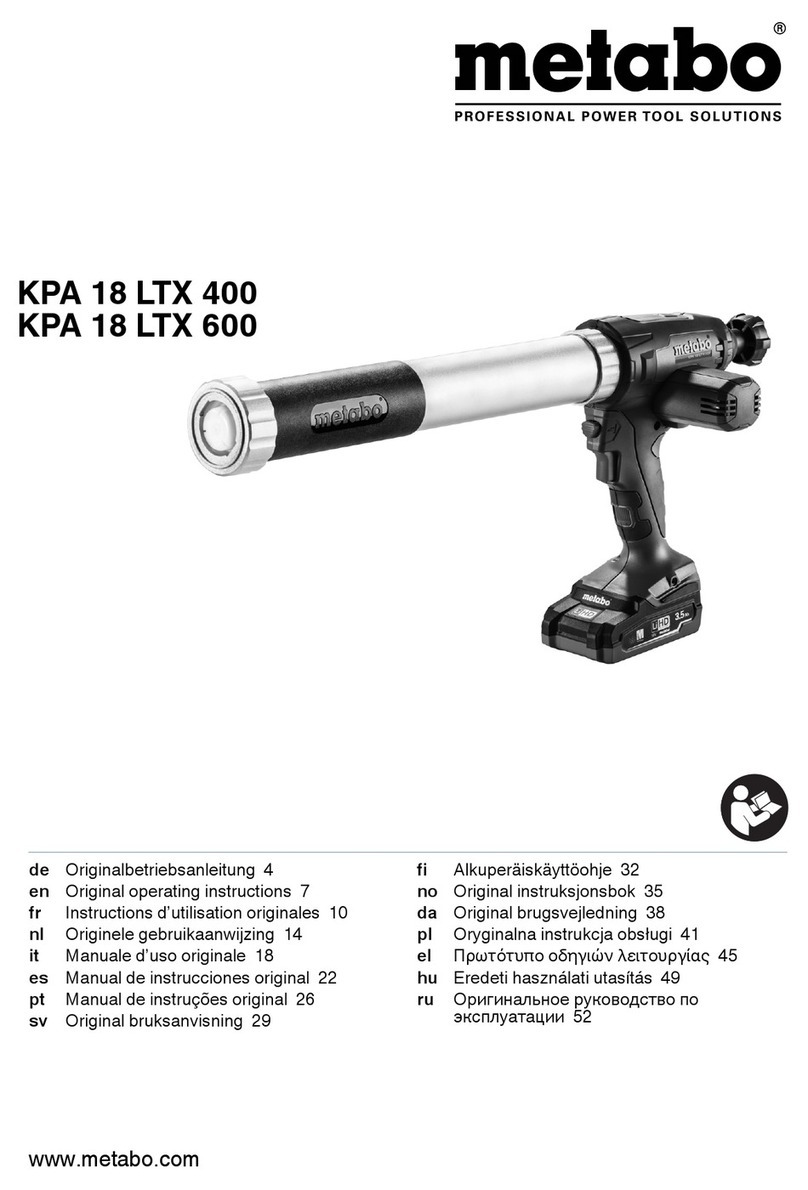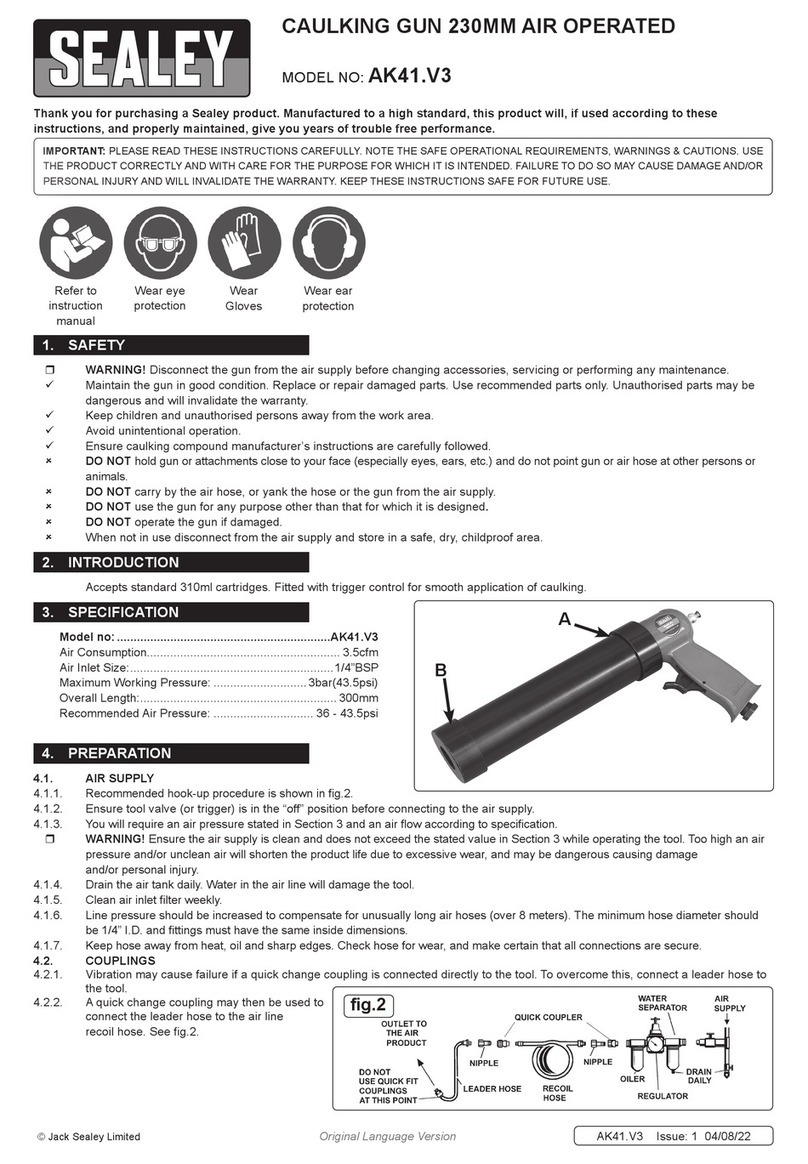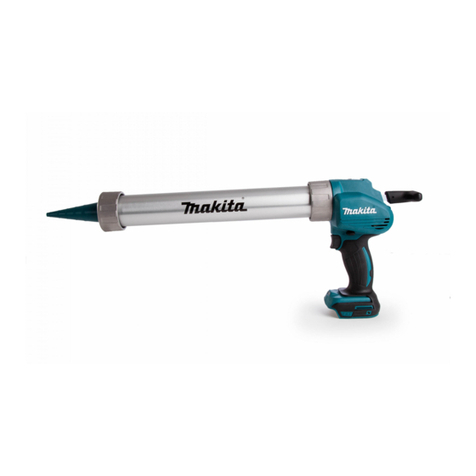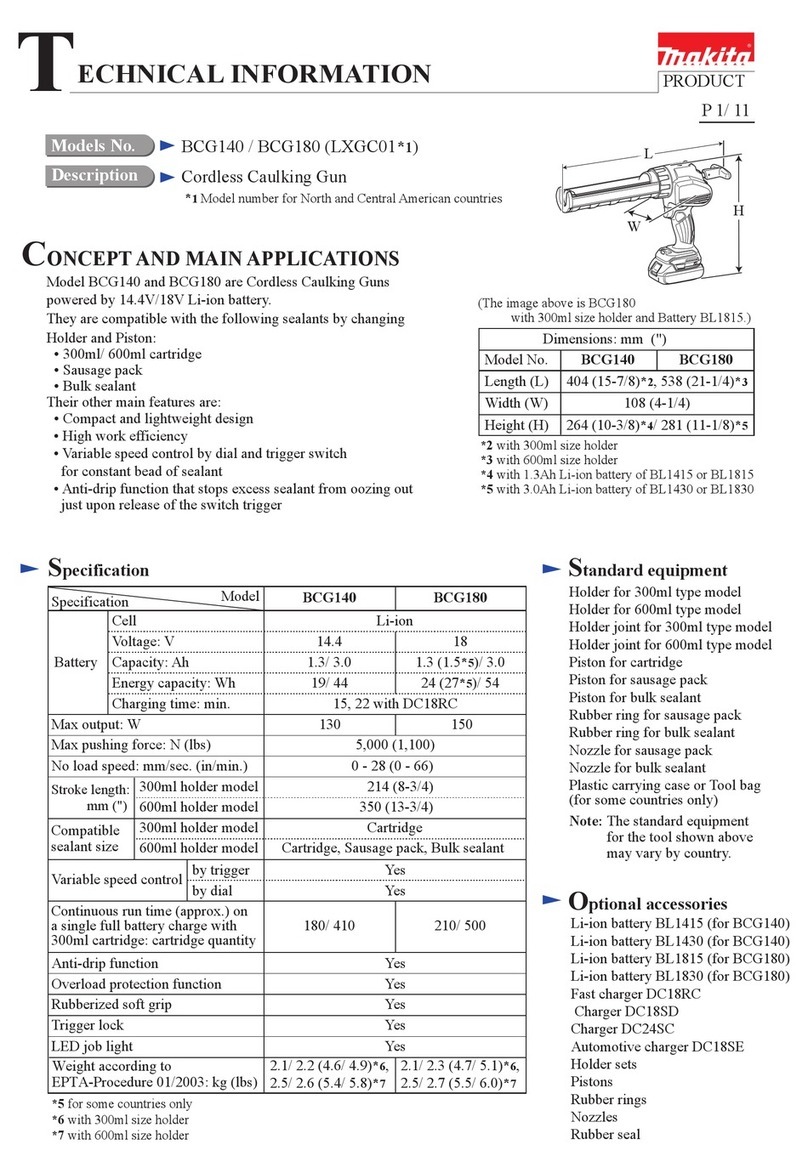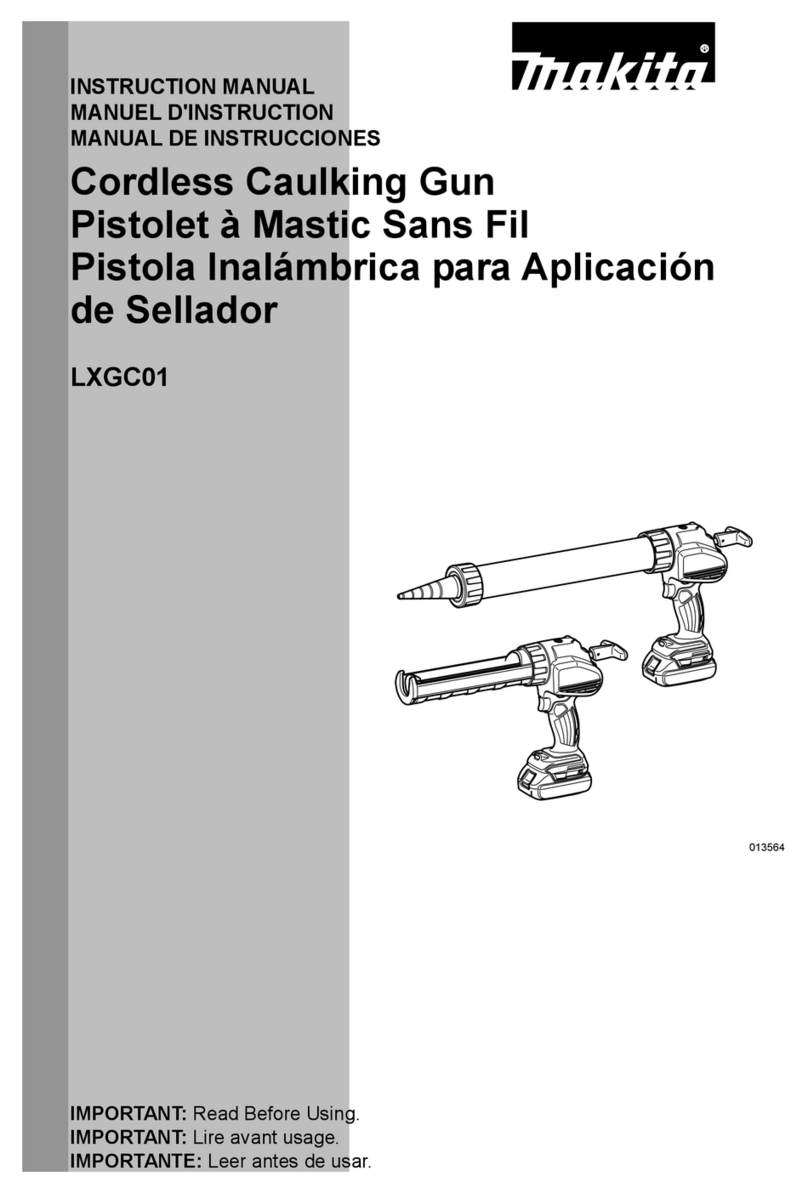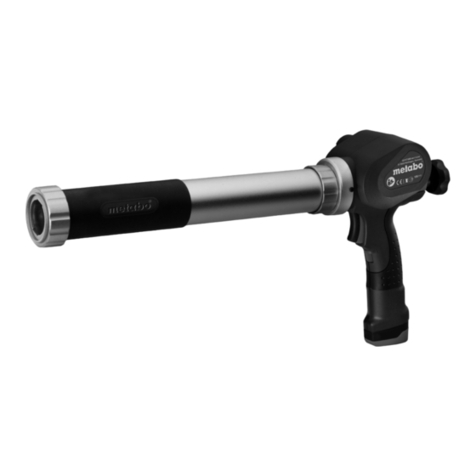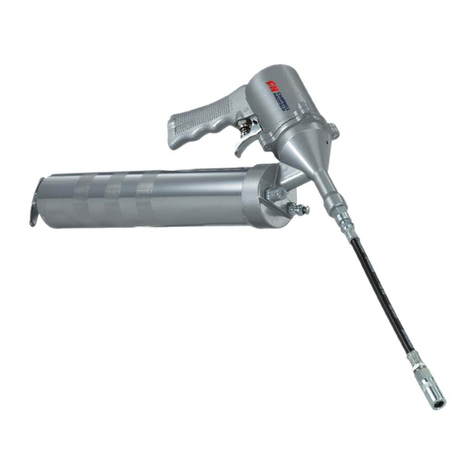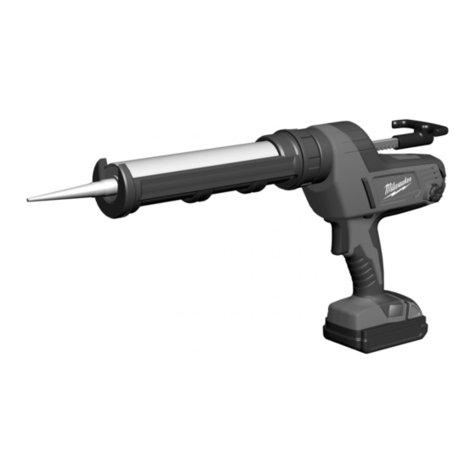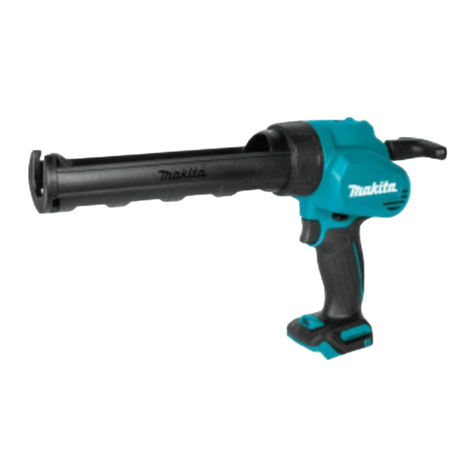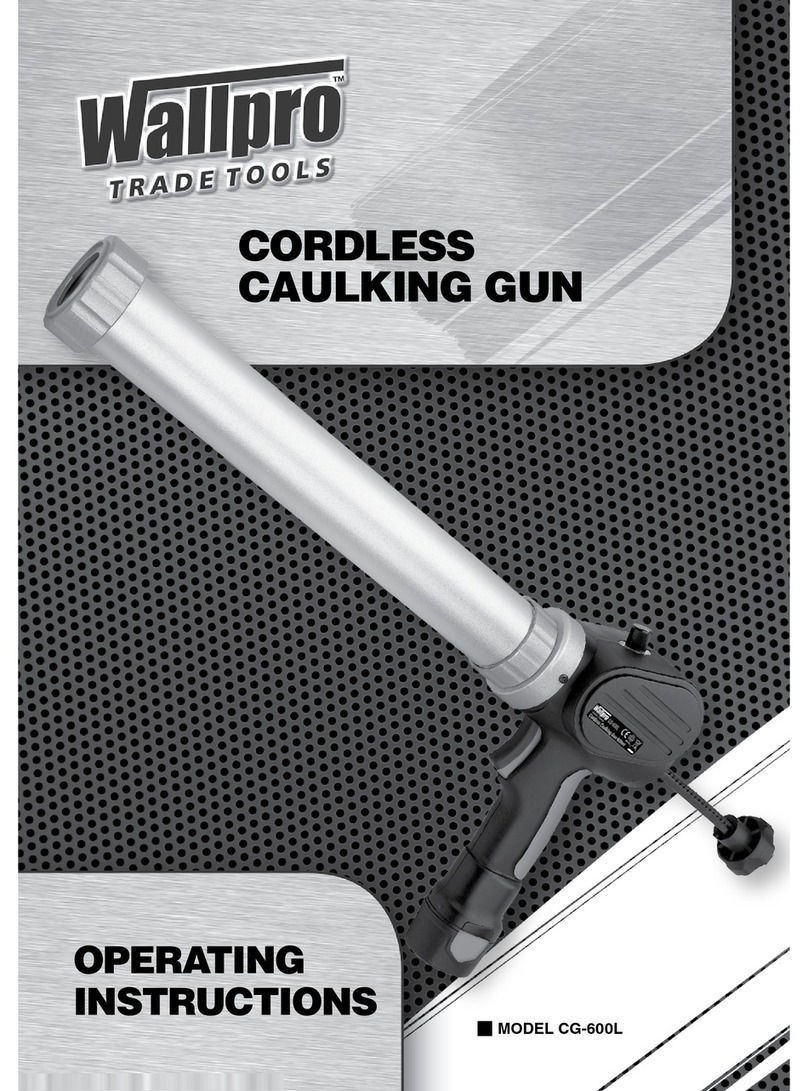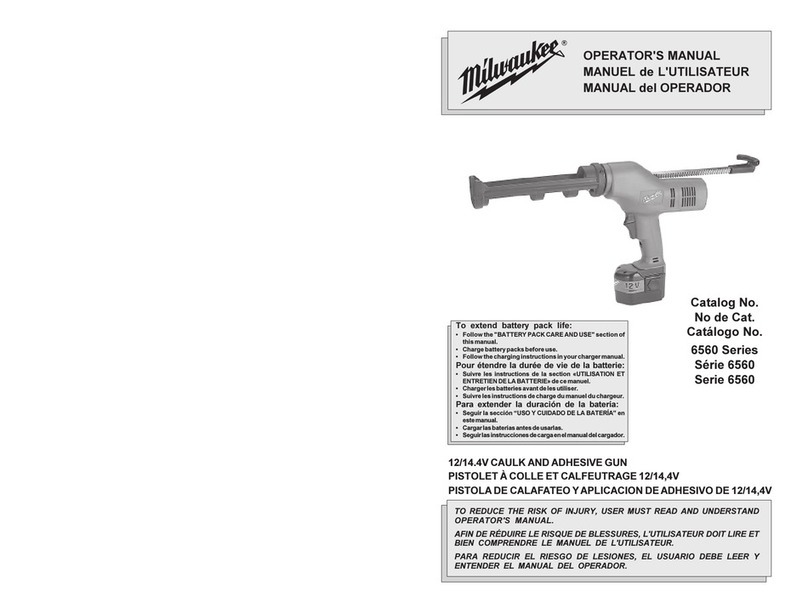
2 — Français
AVERTISSEMENTS DE SÉCURITÉ GÉNÉRALES RELATIVES
AUX OUTILS ÉLECTRIQUES
AVERTISSEMENT
Lire tous les avertissements et toutes les instructions. Ne pas
suivre l’ensemble des avertissements et des instructions peut
entraîner une électrocution, un incendie ou des blessures
graves.
Conserver les avertissements et les instructions à des fins de
référence ultérieure.
Le terme « outil motorisé », utilisé dans tous
les avertissements ci-dessous désigne tout outil fonctionnant sur
secteur (câblé) ou sur piles (sans fil).
SÉCURITÉ DU LIEU DE TRAVAIL
Garder le lieu de travail propre et bien éclairé. Les endroits
encombrés ou sombre s sont propices aux accidents.
Ne pas utiliser d’outils électriques dans des atmosphères
explosives, par exemple en présence de liquides, gaz ou
poussières inflammables. Les outils électriques produisent
des étincelles risquant d’enflammer les poussières ou vapeurs.
Garder les enfants et badauds à l’écart pendant l’utilisation
d’un outil électrique. Les distractions peuvent causer une perte
de contrôle.
SÉCURITÉ ÉLECTRIQUE
Les fiches des outils électriques doivent correspondre à
la prise secteur utilisée. Ne jamais modifier la fiche, de
quelque façon que ce soit. Ne jamais utiliser d’adaptateurs
de fiche avec des outils mis à la terre. Les fiches et prises
non modifiées réduisent le risque de choc électrique.
Éviter tout contact du corps avec des surfaces mises
à la terre, telles que tuyaux, radiateurs, cuisinières et
réfrigérateurs. Le risque de choc électrique est accru lorsque
le corps est mis à la terre.
Ne pas exposer les outils électriques à l’eau ou l’humidité.
La pénétration d’eau dans ces outils accroît le risque de choc
électrique.
Ne pas maltraiter le cordon d’alimentation. Ne jamais
utiliser le cordon d’alimentation pour transporter l’outil et
ne jamais débrancher ce dernier en tirant sur le cordon.
Garder le cordon à l’écart de la chaleur, de l’huile, des
objets tranchants et des pièces en mouvement. Un cordon
endommagé ou emmêlé accroît le risque de choc électrique.
Pour les travaux à l’extérieur, utiliser un cordon spécialement
conçu à cet effet. Utiliser un cordon conçu pour l’usage
extrérieur pour réduire les risques de choc électrique.
S’il est nécessaire d’utiliser l’outil électrique dans un endroit
humide, employer un dispositif interrupteur de défaut à la
terre (GFCI).L’utilisation d’un GFCI réduit le risque de décharge
électrique.
Ne recharger les piles qu’avec l’appareil indiqué. Pour
utiliser l’appareil avec des piles au nickel-cadmium et au
lithium-ion de 18 V, consulter le supplément de raccordement
pour chargeur/outils/piles/appareil n˚ 987000-432.
SÉCURITÉ PERSONNELLE
Rester attentif, prêter attention au travail et faire preuve
de bon sens lors de l’utilisation de tout outil électrique. Ne
pas utiliser cet outil en état de fatigue ou sous l’influence
de l’alcool, de drogues ou de médicaments. Un moment
d’inattention pendant l’utilisation d’un outil électrique peut
entraîner des blessures graves.
Utiliser l’équipement de sécurité. Toujours porter une
protection oculaire. L’équipement de sécurité, tel qu’un
masque filtrant, de chaussures de sécurité, d’un casque
ou d’une protection auditive, utilisé dans des conditions
appropriées réduira le risque de blessures.
Éviter les démarrages accidentels. S’assurer que le
commutateur est en position d’arrêt avant de brancher
l’outil. Porter un outil avec le doigt sur son commutateur ou
brancher un outil dont le commutateur est en position de
marche peut causer un accident.
Retirer les clés de réglage avant de mettre l’outil en marche.
Une clé laissée sur une pièce rotative de l’outil peut causer des
blessures.
Ne pas travailler hors de portée. Toujours se tenir bien
campé et en équilibre. Ceci permettra de mieux contrôler
l’outil en cas de situation imprévue.
Porter une tenue appropriée. Ne porter ni vêtements
amples, ni bijoux. Garder les cheveux, les vêtements et les
gants à l’écart des pièces en mouvement. Les vêtements
amples, bijoux et cheveux longs peuvent se prendre dans les
pièces en mouvement.
Si les outils sont équipés de dispositifs de dépoussiérage,
s’assurer qu’ils sont connectés et correctement utilisés.
L’usage de ces dispositifs de dépoussiérage peut réduire les
dangers présentés par la poussière.
Ne porter ni vêtements amples, ni bijoux. Attacher ou couvrir
les cheveux longs. Les vêtements amples, bijoux et cheveux
longs peuvent se prendre dans les ouïes d’aération.
Ne pas utiliser l’outil sur une échelle ou un support instable.
Une bonne tenue et un bon équilibre permettent de mieux
contrôler l’outil en cas de situation imprévue.
UTILISATION ET ENTRETIEN DES OUTILS
ÉLECTRIQUES
Ne pas forcer l’outil. Utiliser l’outil approprié pour
l’application. Un outil approprié exécutera le travail mieux et de
façon moins dangereuse s’il est utilisé dans les limites prévues.
Ne pas utiliser l’outil si le commutateur ne permet pas de
le mettre en marche ou de l’arrêter. Tout outil qui ne peut
pas être contrôlé par son commutateur est dangereux et doit
être réparé.
Débrancher l’outil et/ou retirer le bloc-piles avant d’effectuer
des réglages, de changer d’accessoire ou de remiser l’outil.
Ces mesures de sécurité préventives réduisent les risques de
démarrage accidentel de l’outil.
Ranger les outils motorisés hors de la portée des enfants
et ne laisser personne n’étant pas familiarisé avec l’outil ou
ces instructions utiliser l’outil. Dans les mains de personnes
n’ayant pas reçu des instructions adéquates, les outils sont
dangereux.
Entretenir les outils motorisés. Vérifier qu’aucune pièce
mobile n’est mal alignée ou bloquée, qu’aucune pièce
n’est brisée et s’assurer qu’aucun autre problème ne
risque d’affecter le bon fonctionnement de l’outil. En
cas de dommages faire réparer l’outil avant de l’utiliser de
nouveau. Beaucoup d’accidents sont causés par des outils
mal entretenus.
Garder les outils bien affûtés et propres. Des outils
correctement entretenus et dont les tranchants sont bien affûtés
risquent moins de se bloquer et sont plus faciles à contrôler.
